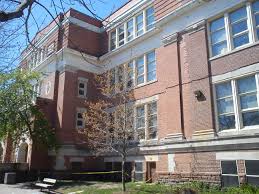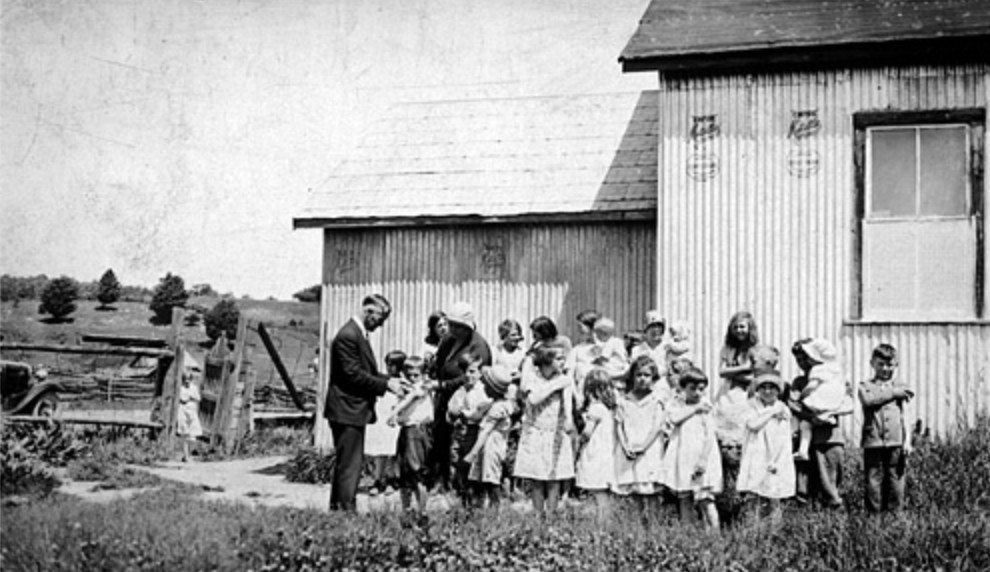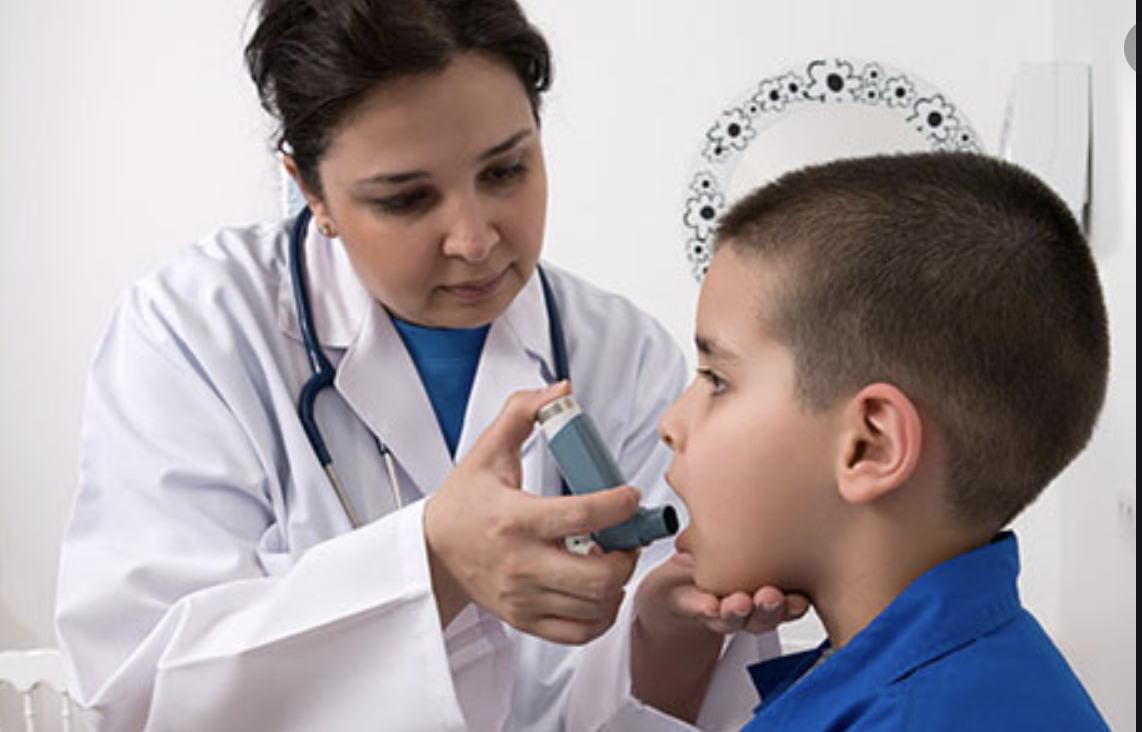Fix Our Schools advocates for all of Ontario’s publicly funded schools to be safe, healthy, well-maintained buildings that provide an environment conducive to learning and working. When we began this parent-led, non-partisan campaign in 2014, provincial funding for school repairs was only $150-million/year – only one-tenth of the amount that industry standards suggest was needed to keep the buildings where 2-million children spend their days in a state of good repair. This chronic and gross provincial underfunding of schools had resulted in $15-billion of disrepair in Ontario’s schools as of 2014 and, even with significantly increased provincial funding in recent years, the overall disrepair in schools has continued to increase to $16.3-billion.
All of this to say, the publicly funded schools in our province were not necessarily safe, healthy, or well-maintained – even before a global pandemic struck this year. With the arrival of COVID-19 and the ensuing school closures, we are now faced with the challenge of how schools will safely re-open in September. Ontario’s students and families are craving not only the learning provided in schools, but also the sense of routine, community, and purpose found at school – not to mention the all-important childcare.
The SickKids’ June 17, 2020 report entitled, “COVID-19: Recommendations for School Reopening” was cited heavily by Premier Ford and Education Minister Lecce when they released their approach to re-opening schools a few days after the SickKids report was released. Ventilation was cited as an important element of a safe return to school.
“Adequately ventilated classroom environments (e.g. open windows with air flow, and improved airflow through ventilation systems) are expected to be associated with less likelihood of transmission compared with poorly ventilated settings.”
How can local schools ensure that classrooms w/no windows, windows that do not open & ones that only open a tiny bit ensure proper ventilation? Provincial funding should be flowing immediately to school boards to fix these issues. Contact your local MPP! #onted #onpoli @SFleece pic.twitter.com/9NWl7fZNWE
— Fix Our Schools (@Fix_Our_Schools) June 25, 2020
Arguably, if Fix Our Schools had been able to commission SickKids to write a report years ago about what would constitute a safe, healthy school environment for children to learn, medical professionals would have also said, even pre-pandemic, that adequately ventilated classroom would be desirable. And yet when Fix Our Schools recently asked citizens to share details on their local schools and how equipped the buildings were to provide adequate ventilation in classrooms, this is a sample of what we heard, indicating that poor indoor air quality, and poor ventilation has been a common issue for years in Ontario’s schools. In fact, many schools across the province have classrooms with no windows, windows that do not open and/or windows that only open a tiny bit – hardly conducive to good air-flow and ventilation:
“The HVAC system at York Humber High School in Toronto has been broken for more than a decade.”
“My daughter attends Tom Thomson School in Burlington. Her classroom this year only had windows along the top of the outside classroom wall. These windows were not reachable, provided very little natural light, and did not open.“
“Harry Bowes Public School in Whitchurch-Stouffville is a lovely school and built within the past 20 years. However, the air circulation is terrible, and windows barely even open. Most teachers and students are continually sick and allergies are a problem while in the building as well.”
“Memorial City Elementary School in Hamilton is 100 years old and the dust coming out of the ventilation system seems that old too. While the windows are newer, the tracks are so badly gummed up that only a couple can be opened and they cannot open much.”
“At Mount Hope School in Hamilton, the upper-level windows do not open at all and the lower level windows only open a bit.”
“As a parent, I’ve been concerned about poor ventilation, no fresh air at Equinox Alternative School in Toronto for years! I am a volunteer in the school and can confirm it is almost never a comfortable temperature. With the added serious concerns regarding COVID-19, and the clear medical guidance (commissioned by the Province!) that fresh air can help reduce transmission, it’s the time to invest in windows.”
“At Earl of March Secondary School in Ottawa, there are many interior classrooms that do not have windows. The school is 50 years old and the HVAC has never worked properly.”
“At Holy Trinity Catholic Elementary School in Sudbury, the kindergarten classroom has no windows. It used to be a resource room, but was converted into a regular classroom due to increased enrollment.”
Fix Our Schools would love to hear from even more citizens about ventilation concerns in their local schools so please contact us today with the name of your local school, the issues you are concerned about, your local MPP and/or the name of your provincial riding. We will continue to add your voices to this large and growing list of detailed concerns below. As Fix Our Schools has submitted to the Province and said many times already, provincial funding should be flowing immediately to school boards to repair and renew school buildings to ensure they are better equipped for a safe school re-opening in September. Provincial funding for schools continues to be grossly inadequate, resulting in ongoing year-over-year increases in repair backlogs in Ontario’s schools.
If you see the name of your local school(s) below, we urge you to please contact your local MPP (we’ve provided emails below) and also Premier Ford (premier@ontario.ca) and Minister Lecce (stephen.lecce@pc.ola.org) to voice your concerns.
- Comments and issues presented in this blog post have been submitted to Fix Our Schools from citizens, and have not been verified by Fix Our Schools.
| Ventilation in Ontario Schools: Public Concerns July 2020 | |||||
| School Name | School Board | Ventilation Issue | MPP | Riding | Party |
| Forest Glen Public School | PDSB | Windows barely open | Hon. Kaleed Rasheed email: kaleed.rasheed@pc.ola.org Twitter: @krasheedmpp |
Mississauga East—Cooksville | PC |
| Gladys Speers Public School | HDSB | Windows that don’t open Windows that barely open |
Hon. Stephen Crawford email: stephen.crawford@pc.ola.org Twitter: @stcrawford2 |
Oakville | PC |
| Tom Thomson School | HDSB | Classrooms with windows only at ceiling Windows do not open Some shared spaces with no windows |
Hon. Jane McKenna email: jane.mckenna@pc.ola.org FACEBOOK: @janemckennapc |
Burlington | PC |
| Central Public School | HDSB | Poor ventilation | Hon. Jane McKenna email: jane.mckenna@pc.ola.org FACEBOOK: @janemckennapc |
Burlington | PC |
| John T. Tuck Public School | HDSB | Windows on top floor barely open Office spaces with no windows |
Hon. Jane McKenna email: jane.mckenna@pc.ola.org FACEBOOK: @janemckennapc |
Burlington | PC |
| Harry Bowes PS | YRDSB | Windows barely open Poor air circulation |
Hon. Paul Calandra email: paul.calandra@pc.ola.org Twitter: @PaulCalandra |
Markham—Stouffville | PC |
| Randall Public School | YRDSB | Kindergarten class windows won’t open | Hon. Logan Kanapathi email: logan.kanapathi@pc.ola.org Twitter: @LoganKanapathi |
Markham—Thornhill | PC |
| Tait St. Public School | WRDSB | Windows don’t fully open | Hon. Belinda C. Karahalios email: belinda.karahalios@pc.ola.org Twitter: @KarahaliosPC |
Cambridge | PC |
| Mount Hope School | HWDSB | Upper level windows do not open Lower level windows barely open |
Hon. Donna Skelly email: donna.skelly@pc.ola.org Twitter: @SkellyHamilton |
Flamborough-Glanbrook | PC |
| Earl of March Secondary School | OCDSB | Interior classrooms without windows Poor ventilation system |
Hon. Merrilee Fullerton email: merrilee.fullerton@pc.ola.org Twitter: @DrFullertonMPP |
Kanata—Carleton | PC |
| Center Wellington District High School | UGDSB | Windows don’t open A/C functions poorly, or is not turned on Classrooms on 3rd floor reach 40°C |
Hon. Ted Arnott email: ted.arnott@pc.ola.org Twitter: @MPPArnottWHH |
Wellington-Halton Hills | PC |
| Roden P.S. | TDSB | Windows that do not open | Hon. Peter Tabuns email: tabunsp-qp@ndp.on.ca Twitter: @Peter_Tabuns |
Toronto—Danforth | NDP |
| Equinox Alternative School | TDSB | Windows that do not open | Hon. Peter Tabuns email: tabunsp-qp@ndp.on.ca Twitter: @Peter_Tabuns |
Toronto—Danforth | NDP |
| RH McGregor Elementary School | TDSB | No windows that open in entire school School is open concept with no walls School is attached to a medical building Roof leaks |
Hon. Peter Tabuns email: tabunsp-qp@ndp.on.ca Twitter: @Peter_Tabuns |
Toronto—Danforth | NDP |
| Duke of a Connaught Public School | TDSB | The windows barely open (open diagonally to about 30 degrees) Unbearable heat year round |
Hon. Peter Tabuns email: tabunsp-qp@ndp.on.ca Twitter: @Peter_Tabuns |
Toronto—Danforth | NDP |
| Island Public school | TDSB | Classrooms with no windows | Hon. Chris Glover email: CGlover-CO@ndp.on.ca Twitter @ChrisGloverMPP |
Spadina—Fort York | NDP |
| Crescent Town School | TDSB | Five classrooms with no windows | Hon. Rima Berns-McGown email: RBerns-McGown-QP@ndp.on.ca Twitter: @beyrima |
Beaches—East York | NDP |
| Gledhill Junior Public School | TDSB | No ventilation Classroom sink doesn’t work |
Hon. Rima Berns-McGown email: RBerns-McGown-QP@ndp.on.ca Twitter: @beyrima |
Beaches—East York | NDP |
| York Humber High School | TDSB | Windows are locked closed HVAC constantly breaking down |
Hon. Faisal Hassan email: FHassan-QP@ndp.on.ca Twitter: @FaisalHassanNDP |
York South—Weston | NDP |
| Humberside Public School | TDSB | Windows barely open Windows require textbooks to prop open Unbearably hot year round School has no fans |
Hon. Bhutila Karpoche email: BKarpoche-QP@ndp.on.ca Twitter: @BhutilaKarpoche |
Parkdale-High Park | NDP |
| Western Technical Commercial School | TDSB | Windows have broken frames & cranks | Hon. Bhutila Karpoche email: BKarpoche-QP@ndp.on.ca Twitter: @BhutilaKarpoche |
Parkdale-High Park | NDP |
| Parkdale School | HWDSB | Some windows don’t open | Hon. Paul Miller email: pmiller-qp@ndp.on.ca Twitter: @mppPaulMiller |
Hamilton East – Stoney Creek | NDP |
| Memorial City Elementary School | HWDSB | Dust coming out of the ventilation system Windows difficult to open Windows barely open (3 inches) |
Hon. Andrea Horwath email: horwatha-qp@ndp.on.ca Twitter: @AndreaHorwath |
Hamilton Centre | NDP |
| St. John Catholic Elementary | WCDSB | Basement classrooms with windows that don’t open Poor ventilation system |
Hon. Laura Mae Lindo email: LLindo-QP@ndp.on.ca Twitter: @LauraMaeLindo |
Kitchener Centre | NDP |
| Kingston Collegiate & Vocational Institute | LDSB | Windowless classrooms Windows that don’t have the mechanisms to remain propped open Students moving this winter to new school that doesn’t have windows that open |
Hon. Ian Arthur email: IArthur-QP@ndp.on.ca Twitter: @IanArthurMPP |
Kingston and the Islands | NDP |
| Holy Trinity Catholic Elementary School | SCDSB | Kindergarten class with no windows | Hon. Jamie West email: JWest-QP@ndp.on.ca Twitter: @jamiewestndp |
Sudbury | NDP |
| Lo-Ellen Park Secondary School | RDSB | Classrooms with one small window that barely open Science classroom with tiny window, no venting |
Hon. Jamie West email: JWest-QP@ndp.on.ca Twitter: @jamiewestndp |
Sudbury | NDP |
| St. Thomas Aquinas Secondary School | DPCDSB | Windows only open 3-4 inches There are only 2 windows per classroom Many rooms do not have screens HVAC malfunctions |
Hon. Gurratan Singh email: GSingh-QP@ndp.on.ca Twitter: @GurratanSingh |
Brampton East | NDP |
| Bruce Public School | TDSB | Windows barely open | Hon. Peter Tabuns email: tabunsp-qp@ndp.on.ca Twitter: @Peter_Tabuns |
Toronto—Danforth | NDP |
| École secondaire Toronto Ouest (shares building with Saint-Frère-André) | CSViamonde | Classrooms without windows A/C is ancient, not working Sewage system malfunctions |
Hon. Marit Stiles email: MStiles-QP@ndp.on.ca Twitter: @maritstiles |
Davenport | NDP |
| École secondaire catholique Saint-Frère-André | TCDSB | Classrooms without windows A/C is ancient, not working Sewage system malfunctions |
Hon. Marit Stiles email: MStiles-QP@ndp.on.ca Twitter: @maritstiles |
Davenport | NDP |
| Carson Grove Elementary School | OCDSB | Windows don’t open Some classrooms have no windows |
Hon. Lucille Collard email: LCollard.mpp.co@liberal.ola.org Twitter: @LucilleCollard |
Ottawa-Vanier | LIBERAL |
| Duncan J Schoular Public School | UCDSB | Design for school was to have a/c installed, so few windows, no real ventilation | Hon. Randy Hillier email: RHillier-CO@ola.org Twitter: @randyhillier |
Lanark—Frontenac—Kingston | IND. |



